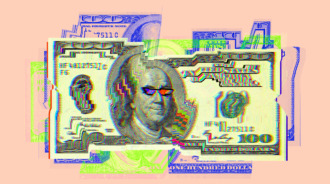

In this article, we will be discussing the stock exchange of Korea. It is in Busan with an office for market oversight and cash markets in Seoul. We will study its background and how it works.
What is the Korea Exchange (KRX)?
The Korea Exchange (KRX) is a solitary securities exchange operator in South Korea. It has markets in bonds, stock index futures, equities, and equity options. Another important fact about the KRX is that it is a division of the much larger entity known as Korea Exchange which includes KOSDAQ, the electronic market, and Korea Futures Exchange.
Background of the Korea Exchange
The Korea Exchange came into existence in 1956. It operated as a standalone entity, providing companies with growth capital and citizens with opportunities to invest. This changed when KRX became a division of the Korea Exchange in 2005.
The KRX is credited for establishing stock index futures in South Korea and the options market from 1996 to 1997. Later in the year 2000, the existence of trading warrants. In 2002, Korea Exchange created the Korean Securities Dealers Automated Quotations (KOSDAQ). The same year, they established equity options and exchange-traded funds (ETFs).
How does the Korea Exchange work?
The Korea Exchange works in the same way as any other stock exchange in the world. Trading starts at 9:00 am, when the KRX opens, and ends at 3:30 pm when the KRX closes. It is open from Monday to Friday and closed on Saturday and Sunday.
In 2021, there were 2,448 companies listed on the South Korean stock market with a combined market capitalization of $2.6 trillion.
Most exchanges around the world have an index that tracks the health of the exchange in the stock market. The index in the Korean stock market is KOSPI, the abbreviation for Korea Composite Stock Price Index.

The Korea Composite Stock Price Index (KOSPI)
KOSPI is a series of indexes that keeps track of the overall Korea Exchange (KRX) and its various components. We can define each KOSPI index as capitalization-weighted market averages, also known as market value-weighted indexes. These are a type of stock market index where singular components of the index are included in amounts that correspond to their total market capitalization.
One of the most popular KOSPI indexes is KOSPI 200. It consists of the 200 largest publicly-traded common stocks traded in Korea, roughly tracking about seventy percent of the Korea Exchange’s overall market value. Many traders, either buying or selling stocks, see the KOSPI 200 to evaluate the current performance of the KRX. The traders make their trade decisions depending on the KOSPI 200’s value.
Korea Exchange: trading considerations
Regarding the Korea Exchange, the easiest way to invest would be with exchange traded funds or ETFs. They instantly reduce risk or volatility as you are now investing in various assets. There are several ETFs in which one can invest money. iShares MSCI South Korea ETF (EWY), the Korea KOSPI 200 ETF (HKOR), and the Franklin FTSE South Korea ETF (FLKR) are names of just a few of the ETFs. This targeted access to Korean stocks extends to large and mid-sized companies.
Benefits of investing in South Korea
The most prominent feature of investing in the South Korean Stock Market today is its unique combination of stability and rapid growth rates. This tends to attract investors from all around the world. They see it as a highly beneficial investment opportunity for themself.
The South Korean economy is expected to continue growing at a rate of 2.3% and 3.6% from 2021 to 2026, indicative of a high economic growth rate. The economy of South Korea is also a member of the G20 as an Organisation for Economic Co-operation and Development (OECD). Their annual per capita income is more than $30,000, which means it is highly stable. These are factors that investors always appreciate and so invest in such markets.
Risks of investing in South Korea
The risks of investing in South Korea should be considered before deciding to invest. The South Korean economy relies on three major industries: automakers, financial services, and technology. This makes their economy vulnerable in case these industries face any kind of setback.
The South Korean economy relies heavily on exports, which can prove harmful in times of a global economic downturn.
General
Investments in the stock market of South Korea today have several advantages and benefits. It has several attractive features that ensure your investment is right. However, certain disadvantages may be holding you back. Investments always have risks involved; every trader should remember this.






